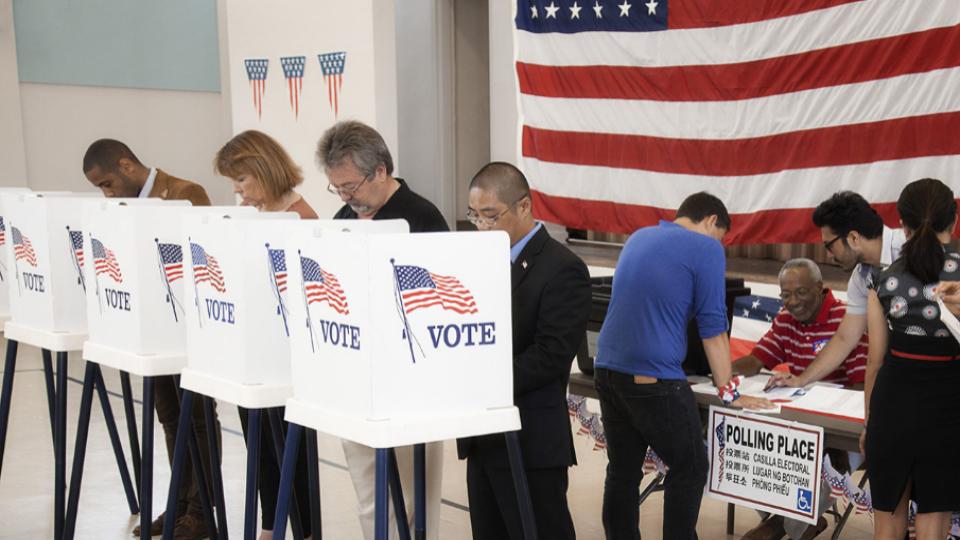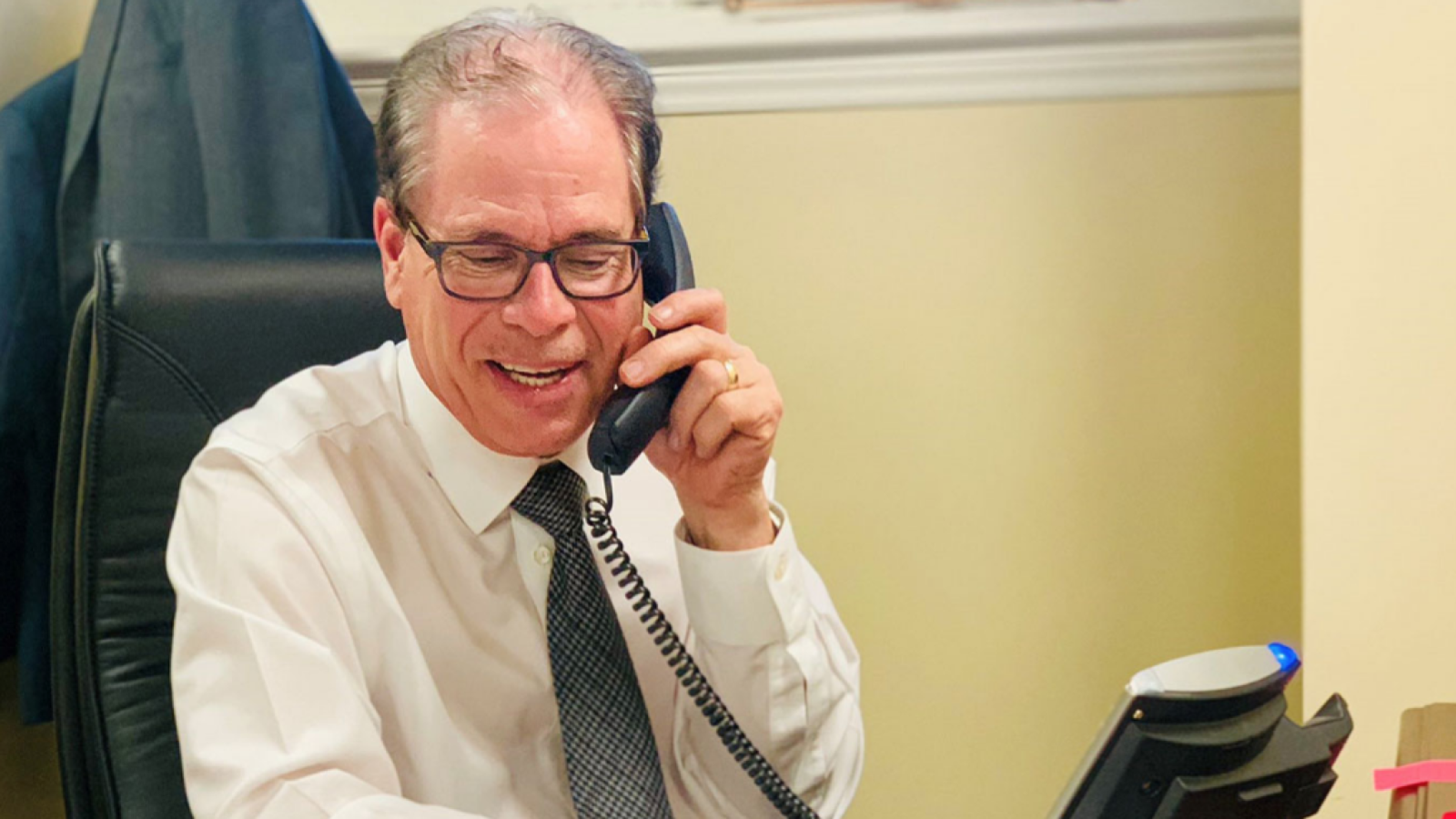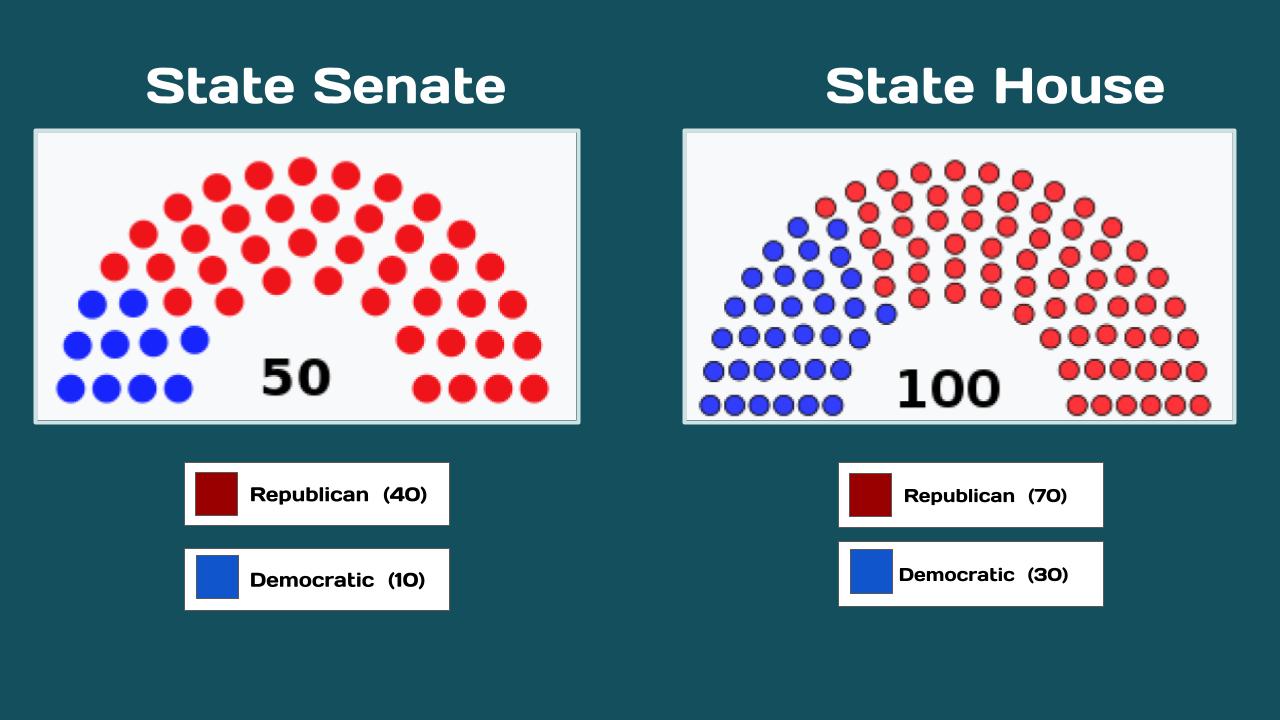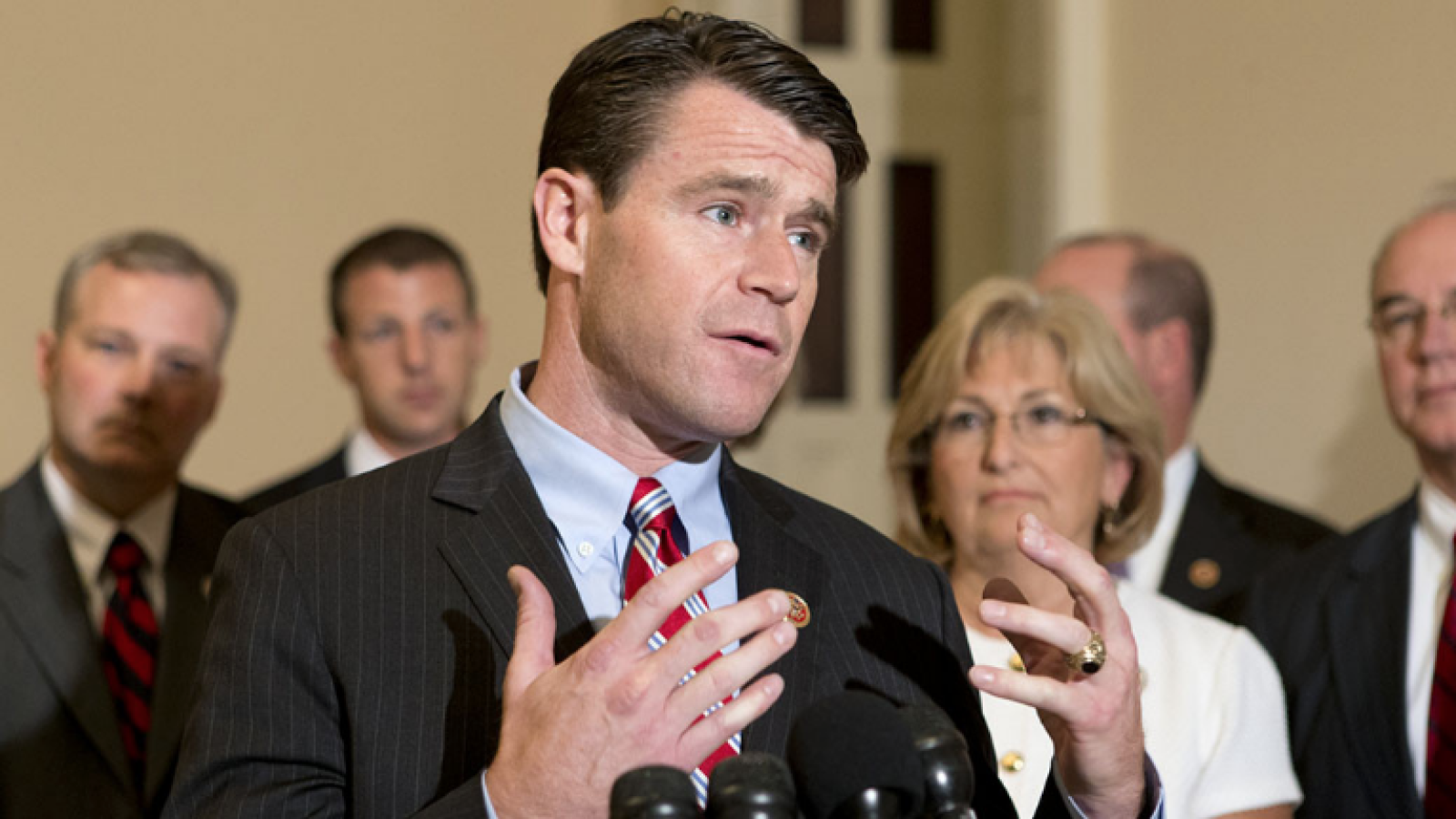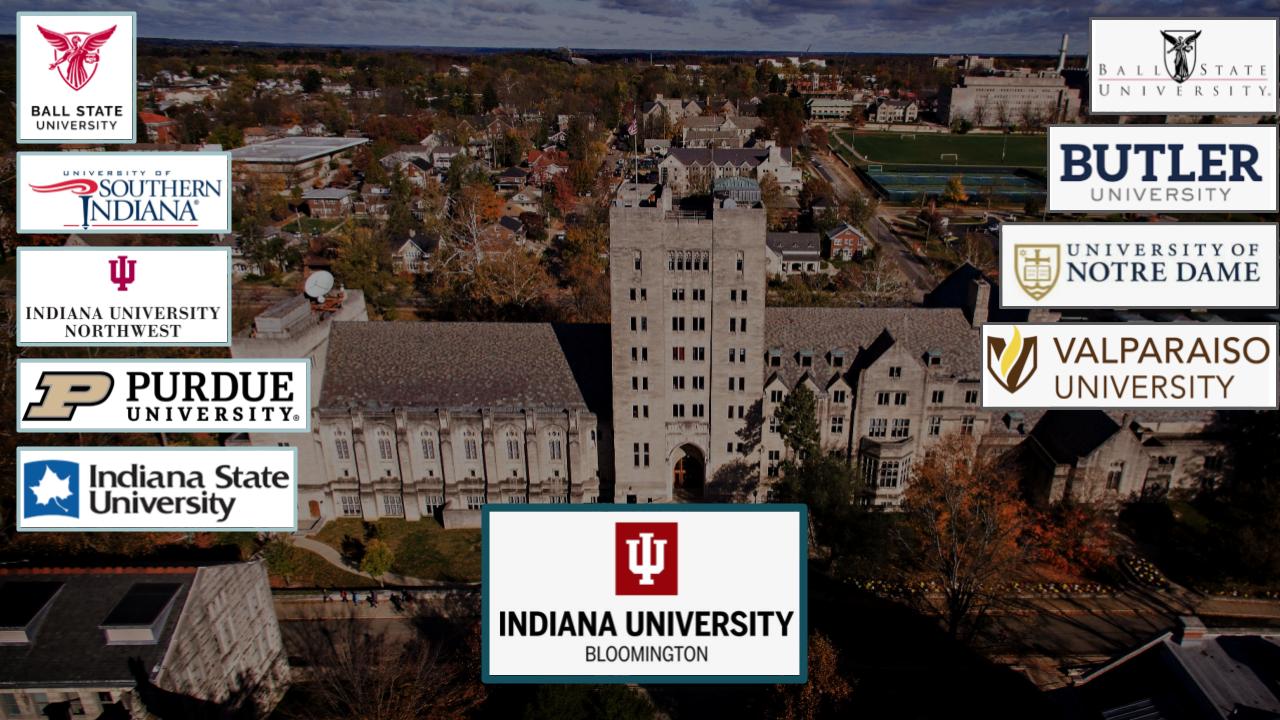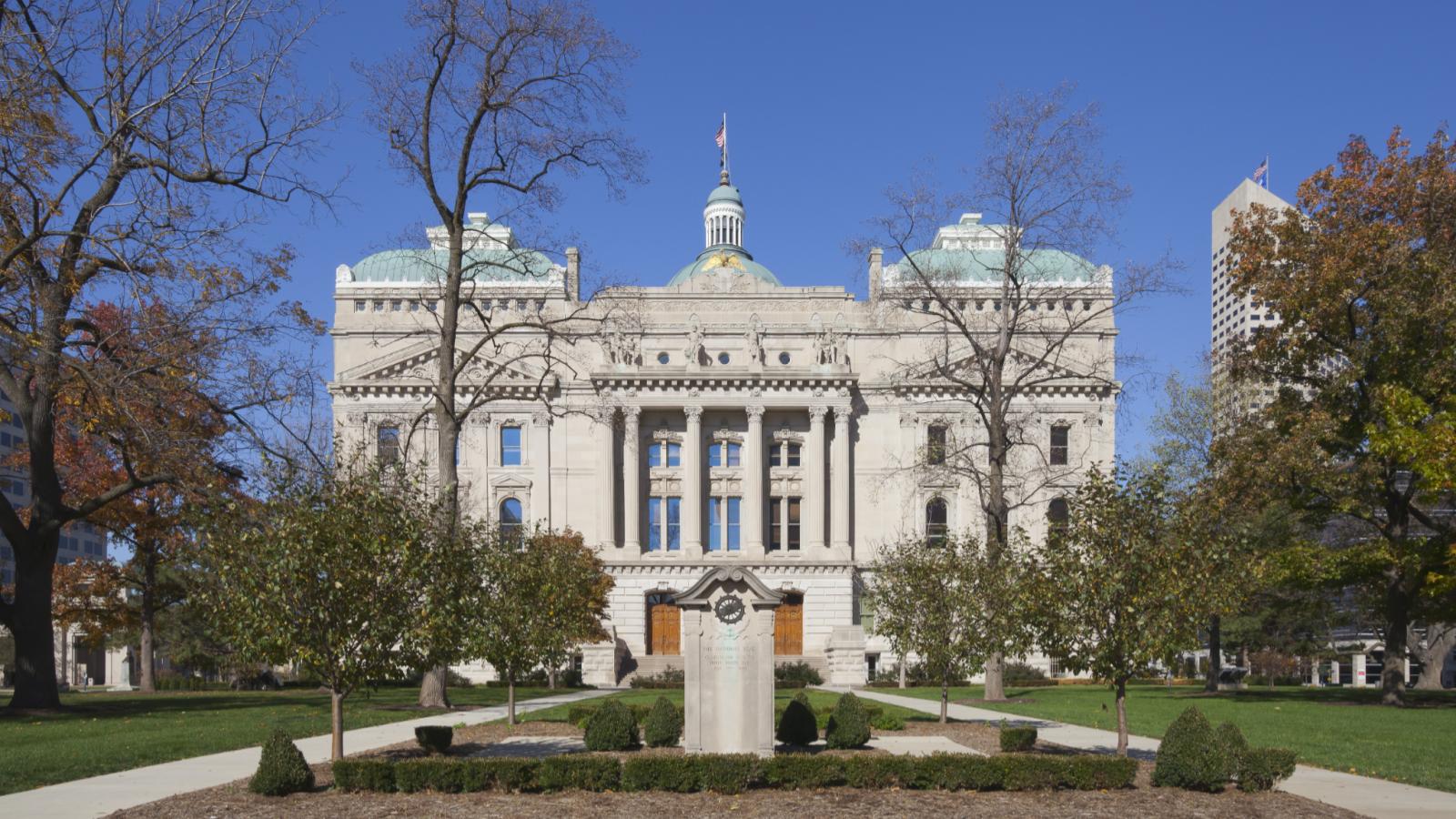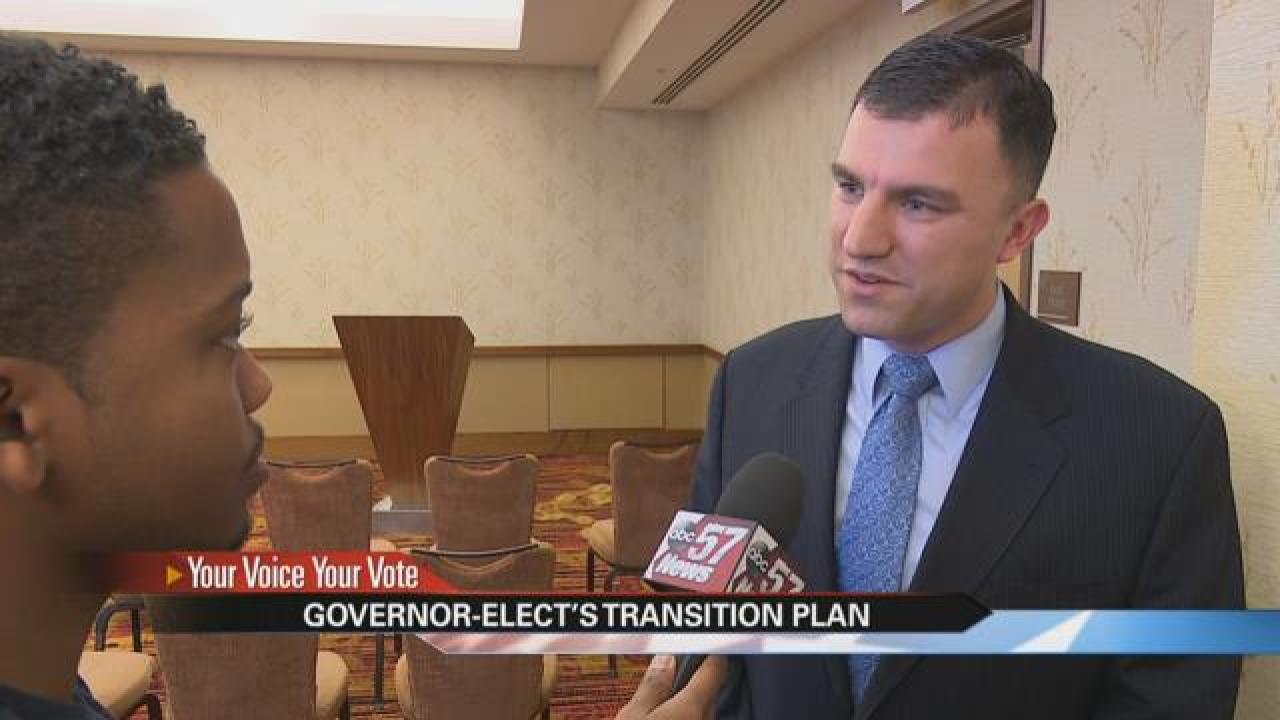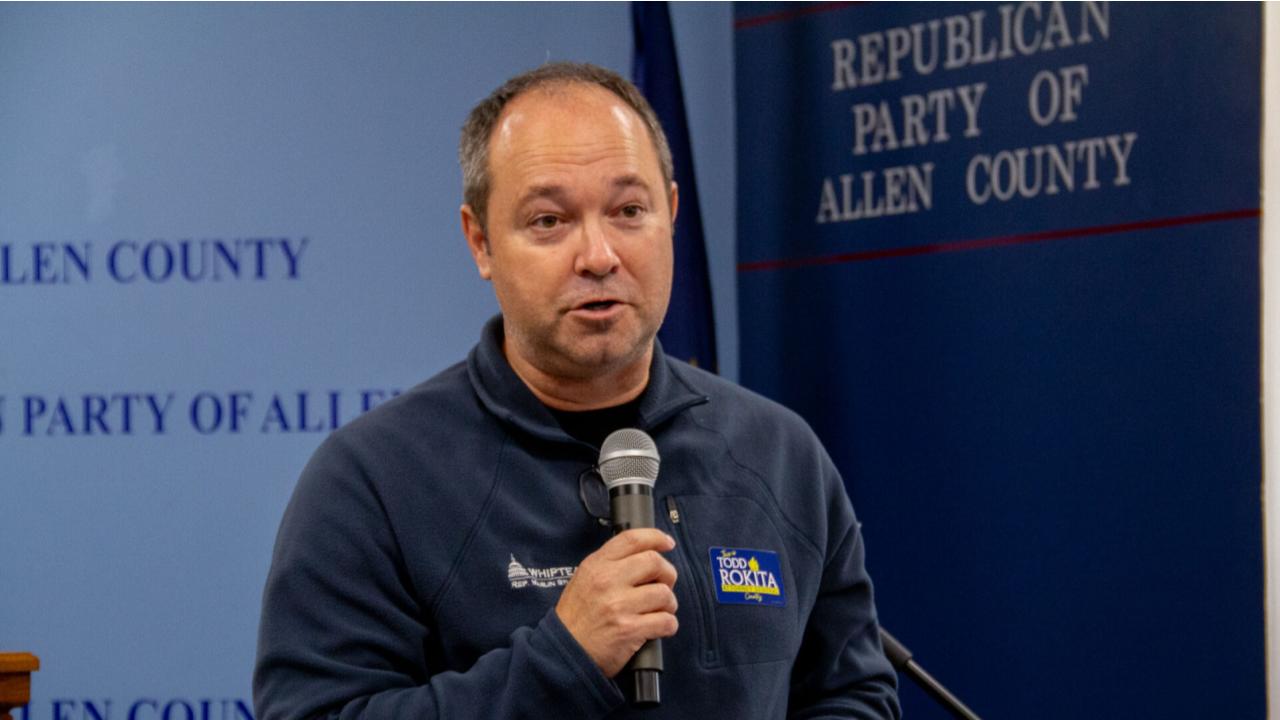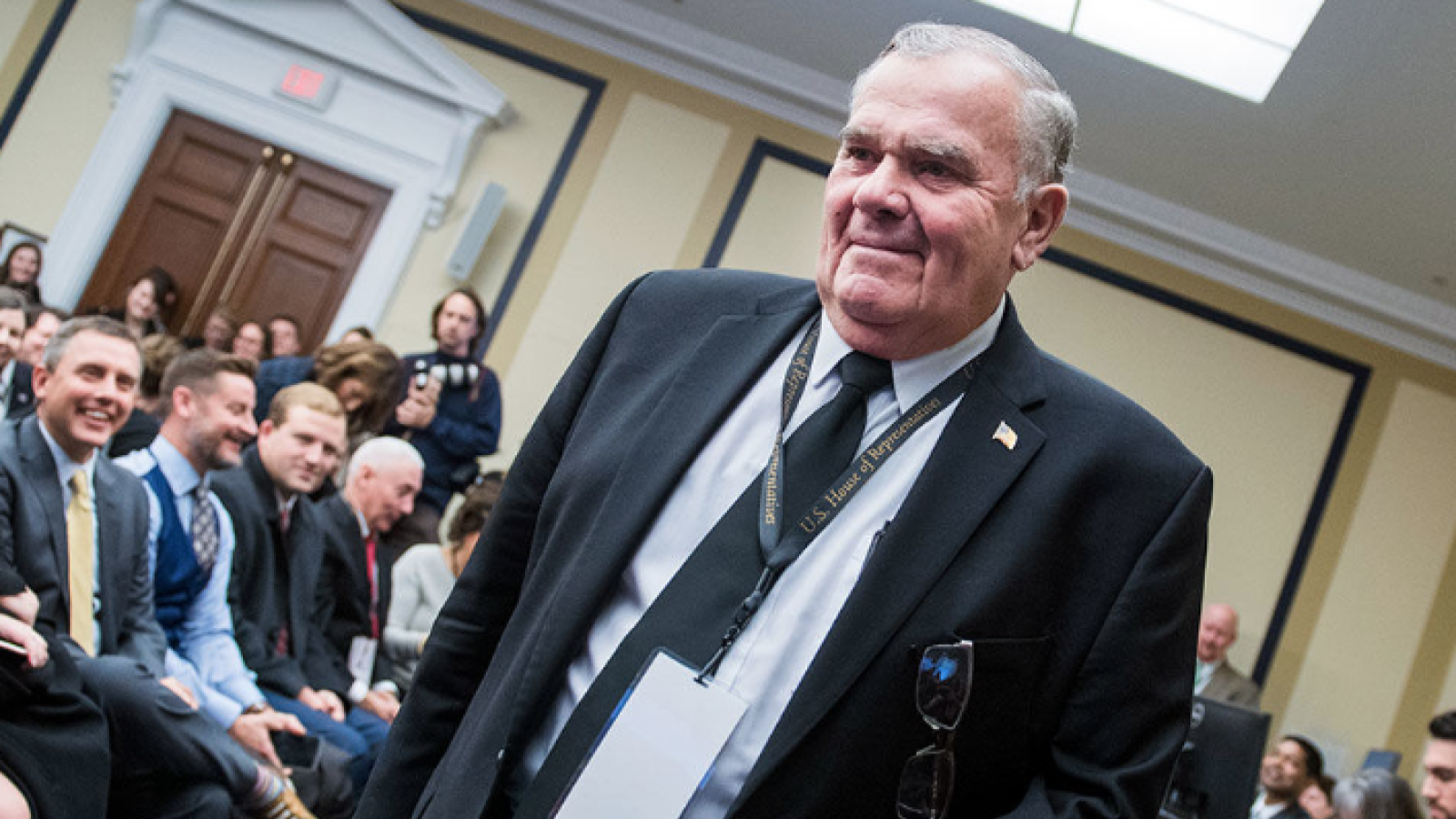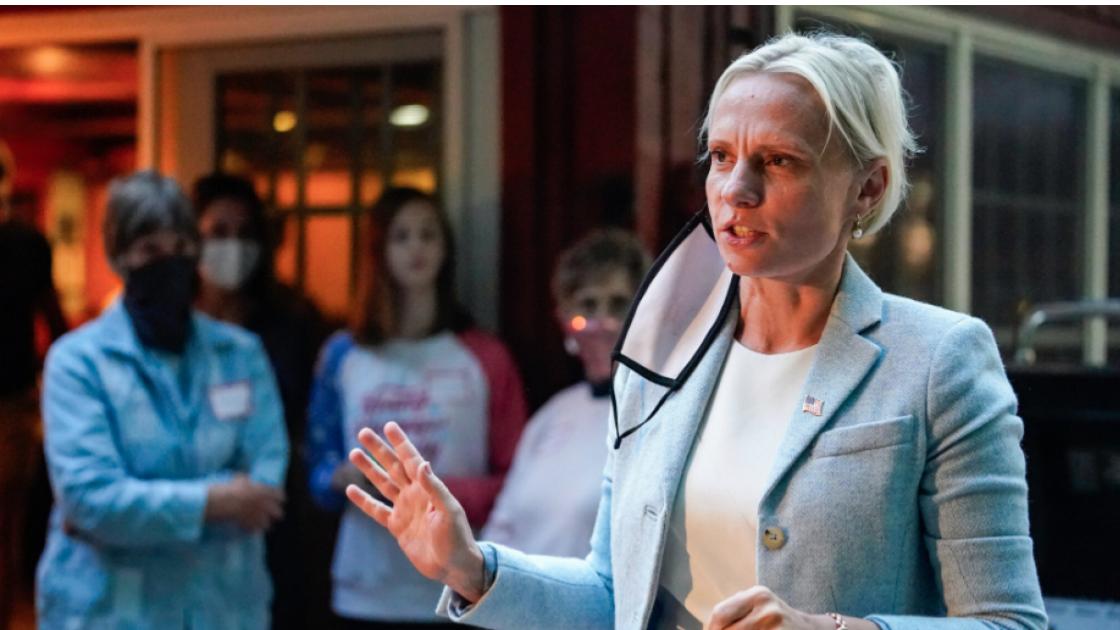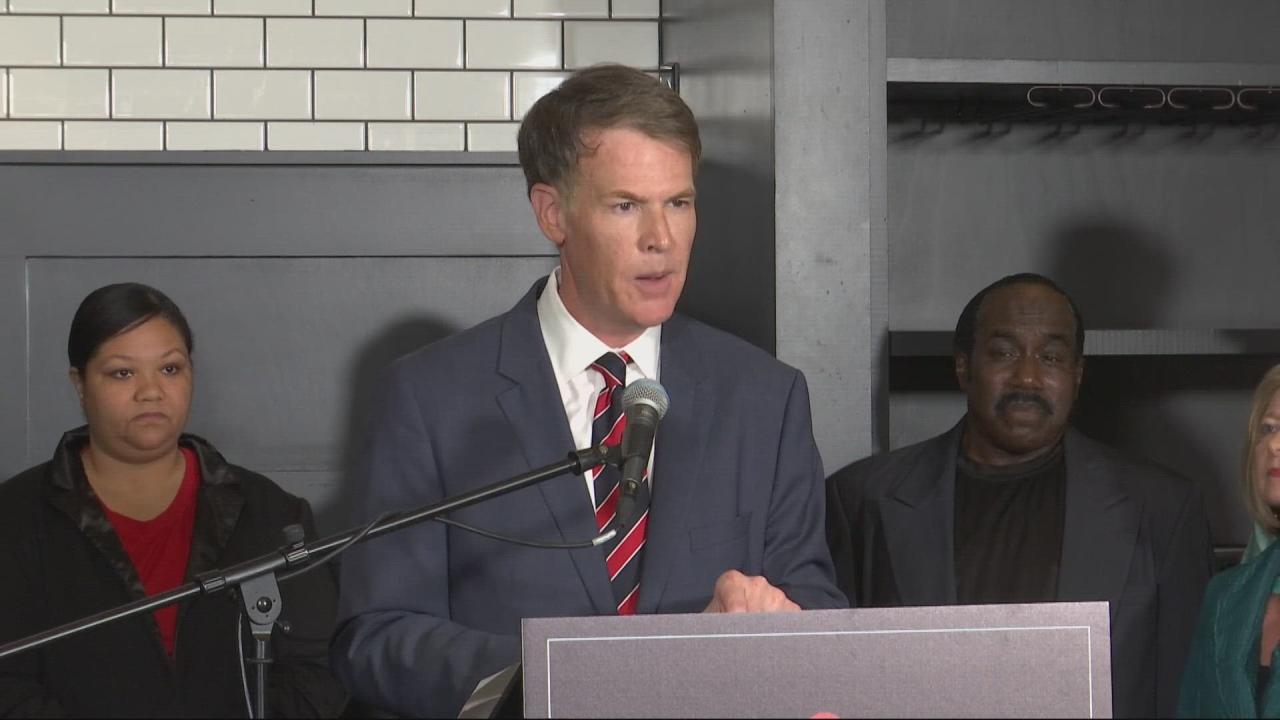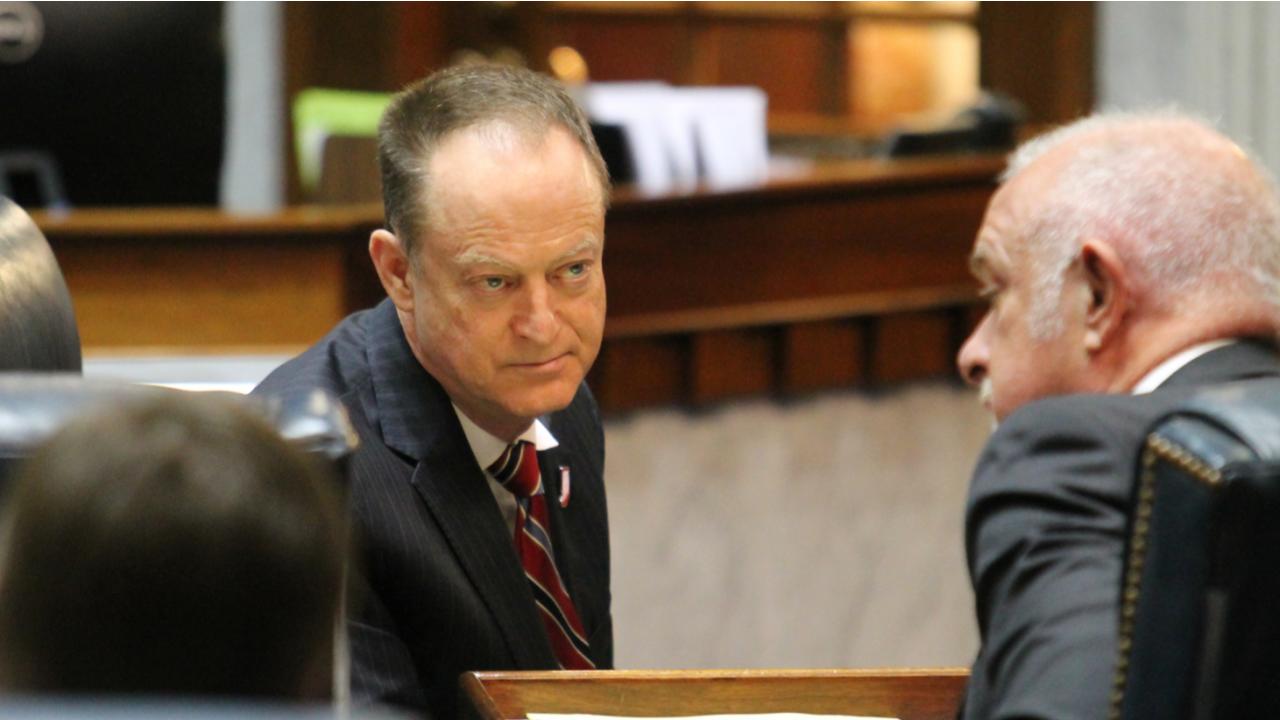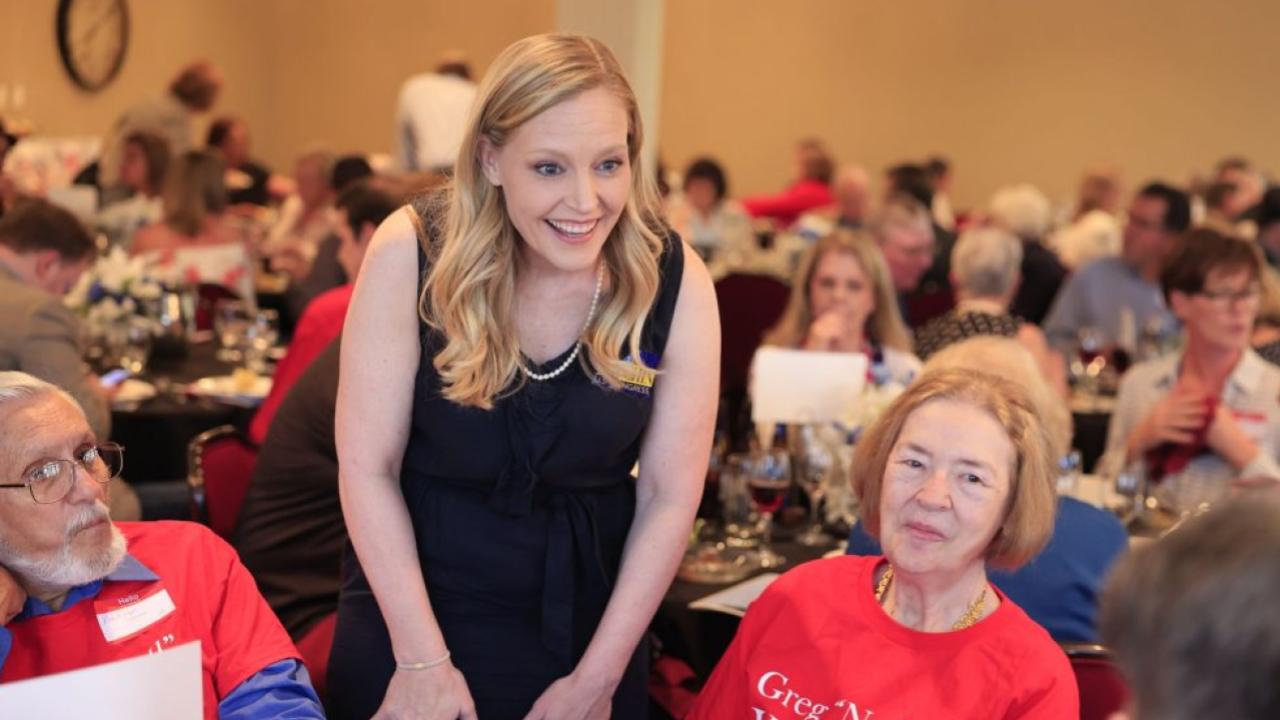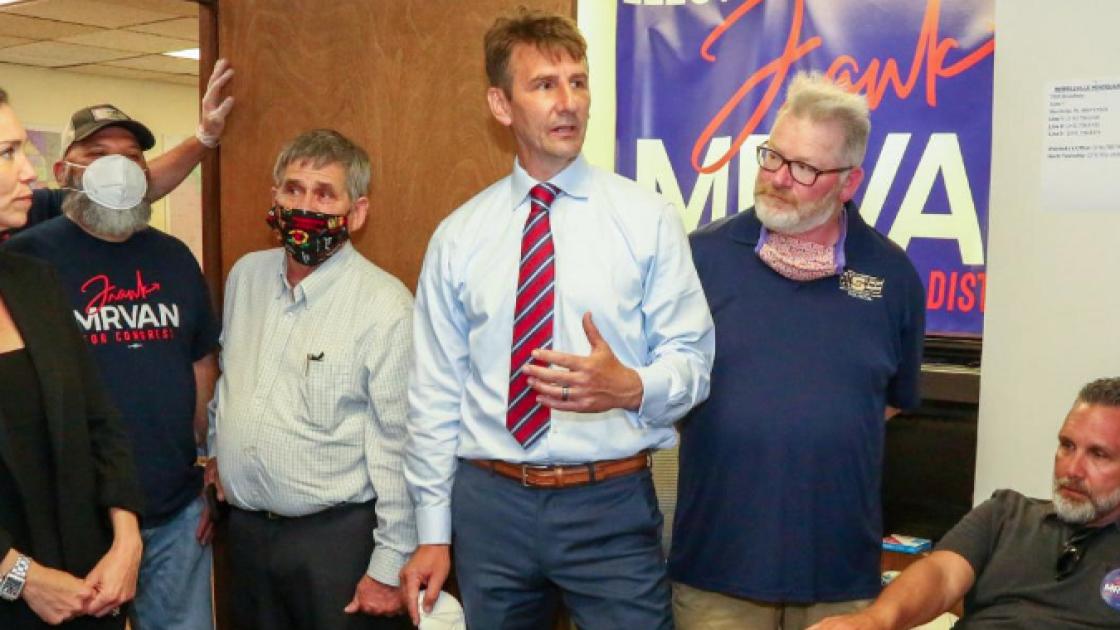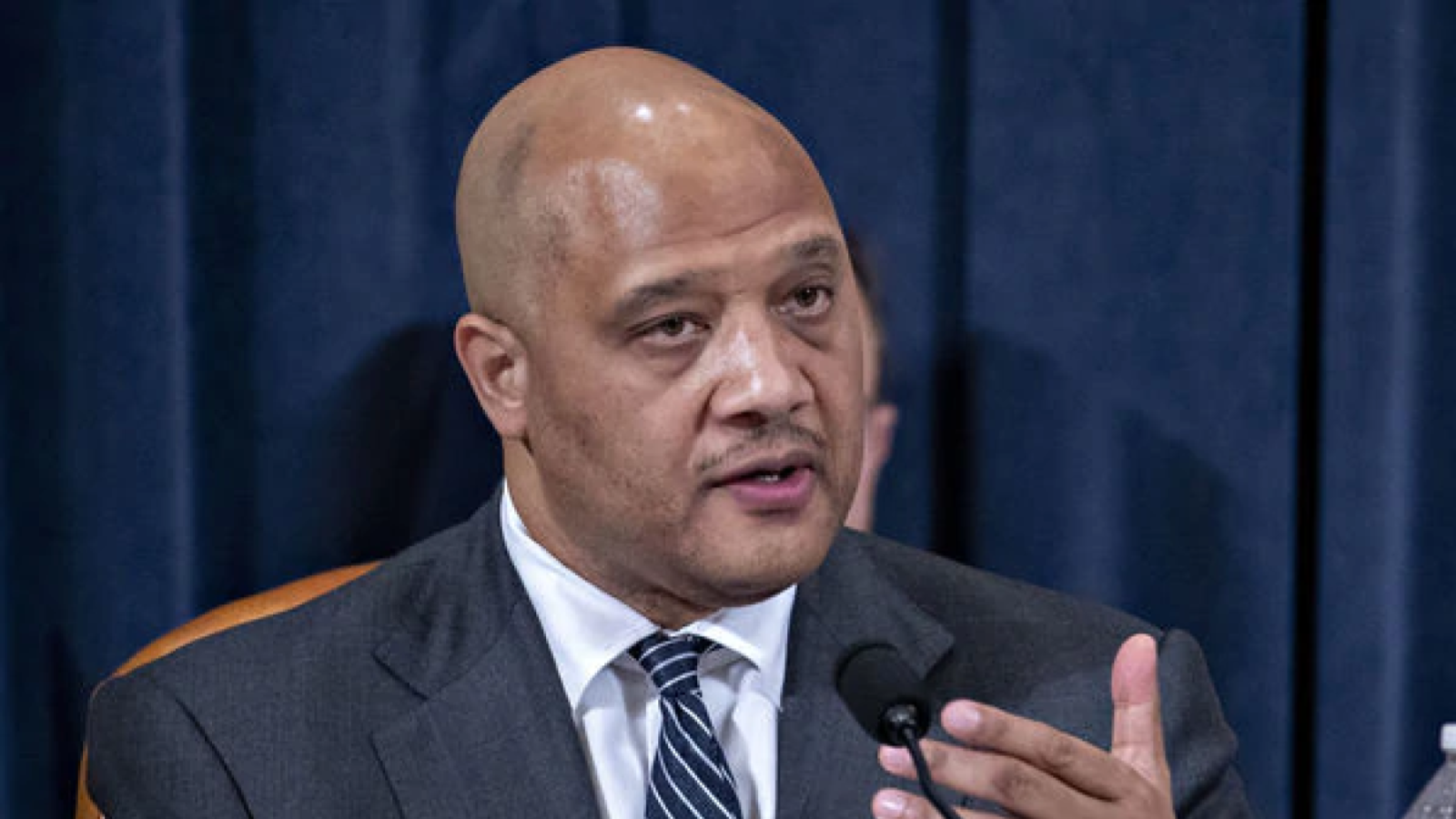Summary
Indiana is located in the Midwestern region of the USA with Indianapolis as its capital. Eric Holcomb (R) is Governor.
The Indiana legislature has 50 Senate members and 100 House members.
OnAir Post: Indiana onAir
News
The base content in each post in this Indiana onAir Hub has been updated as of 12/20/23. In addition to the eight posts on the home page, in depth posts on each US House member and posts on Indiana government and elections have been started. These posts have been shared with the US onAir Hub and will updated in the US onAir automatically when they are updated in this hub.
If your university or nonpartisan organization (such as a government focused research center, citizen engagement program or a League of Women Voters chapter) is interested in assisting the US onAir network to help curate new issue posts or other posts on this Hub and moderate the forums in each post, contact Ben Murphy at Ben.Murphy@onair.cc.
We are also supporting college students to start an onAir chapter on the their campus to coordinate the curation and moderation of posts especially on state and local representatives and government.
About
The Indiana onAir Hub supports Hossiers to become more informed about and engaged in local, state, and federal politics while facilitating more civil and positive discussions with their representatives, candidates, and fellow citizens.
- Indiana onAir is one of 50 state governance and elections hubs that the US onAir Network is providing to help reinvigorate US democracy. This post has short summaries of current state and federal representatives with links to their complete Hub posts. Students curate post content from government, campaign, social media, and public websites. Key content on the Indiana Hub is also replicated on the US onAir nations Hub at: us.onair.cc.
- Indiana students will be forming onAir chapters in their colleges and universities to help curate Hub content. As more students participate and more onAir chapters are started, we will expand to include more state and local content as well as increase the number of aircasts – student-led, livestreamed, online discussions with candidates, representatives, and the public.
Find out more about Who Represents Me in Indiana
Learn more about the US onAir Network
All hub content in onAir hubs is free to the public. Hub ontent is under the Creative Commons Attribution-NonCommercial license which permits content sharing and adaptation by nonprofit organizations as long as proper attribution is given to its author(s) and is used for non-commercial purposes. Content and moderation guidelines reinforce our commitment to fact-based, comprehensive content and civil and honest discourse.
To participate in aircast and post discussions, email usdemocracy@onair.cc and include your first name last name, and zipcode. Your real name and any other profile information will not be displayed unless you choose to do so. Your personal information is not shared with any other website or organization.
Hub membership will enable you to:
- Participate in issue and interview aircasts (student-led livestreamed discussions);
- Interact directly with post authors and curators giving them feedback, content suggestions, and asking questions;
- Ask questions, make suggestions, and give endorsement to representatives
Web Links
State Representatives
Governor Eric Holcomb
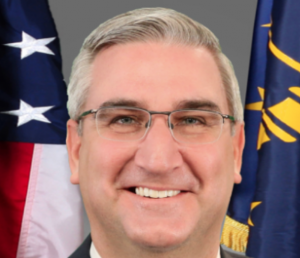 Current Position: Governor since 2017
Current Position: Governor since 2017
Affiliation: Republican
Candidate: 2022 Governor
Former Positions: Lt. Governor from 2016 – 2017; Chair of the Indiana Republican Party from 2011 – 2013
Holcomb served in the United States Navy for six years, first at Naval Station Great Lakes and later in Florida and Portugal. Holcomb was nominated to fill the remainder of Lieutenant Governor Sue Ellspermann’s term after she resigned on March 2, 2016. He won the 2016 election for governor of Indiana over Democratic nominee John R. Gregg. Holcomb was reelected in 2020 over Democratic nominee Woody Myers and Libertarian nominee Donald Rainwater.
Featured Quote:
“The Hoosier State has taken sustainability to heart. Indiana lives up to its Crossroads of America motto, with four major interstate highways coming together in Indianapolis, and easy access to much of the Eastern half of the U.S.”
OnAir Post: Eric Holcomb – IN
US Representatives
Senator Mike Braun
 Current Position: US Senator since 2019
Current Position: US Senator since 2019
Affiliation: Republican
Former Position: US Representative from 2014 – 2017
Other Positions:
Ranking member, Subcommittee on Employment and Workplace Safety
After graduating from Harvard, Braun moved back to Indiana and joined his father’s business manufacturing truck bodies for farmers. When the economy of the mid-1980s hit farmers hard and his father’s business nearly went under, Braun steered the business in the more lucrative direction of selling truck accessories. The business subsequently grew from 15 employees to more than 300.
Featured Quote:
Democrats’ reckless tax-and-spend spree will create an inflation bomb that will be exploding from now until the 2022 midterms. @TeamCavuto
OnAir Post: Mike Braun – IN
Senator Todd Young
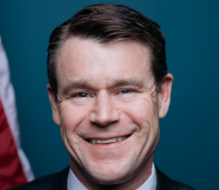 Current Position: US Senator since 2017
Current Position: US Senator since 2017
Affiliation: Republican
Former Position: US Representative from 2011 – 2017
Other Positions: Ranking Member, Subcommittee on Near East, South Asia, Central Asia, and Counterterrorism
Ranking Member, Subcommittee on Social Security, Pensions, and Family Policy
Young received an appointment to the United States Naval Academy in Annapolis, Maryland, where his classmates elected him a class officer and he earned a varsity letter as a member of Navy’s NCAA Division I soccer team. Young then led the intelligence department of VMU-2, an unmanned aerial vehicle squadron based in Cherry Point, North Carolina. In 2000 while stationed in the Chicago area, Young earned an MBA from the University of Chicago Graduate School of Business. In 2001, he moved to Washington, D.C., where he briefly worked at The Heritage Foundation, a conservative think tank. Then he became a staffer for U.S. senator Richard Lugar.
Featured Quote:
We Americans have always been drawn to the frontier. As we face the threat of China, we must decide once again to invest in ourselves and science – the endless frontier. #EndlessFrontierAct
OnAir Post: Todd Young – IN
Marlin A. Stutzman IN-03
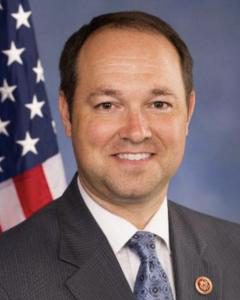 Marlin Andrew Stutzman (born August 31, 1976) is an American politician who was a member of the United States House of Representatives, representing Indiana’s 3rd congressional district, from 2010 to 2017. A Republican, Stutzman previously served as a member of the Indiana House of Representatives from 2002 to 2008, representing district 52, and as a member of the Indiana Senate, representing the 13th district, from 2009 to 2010.
Marlin Andrew Stutzman (born August 31, 1976) is an American politician who was a member of the United States House of Representatives, representing Indiana’s 3rd congressional district, from 2010 to 2017. A Republican, Stutzman previously served as a member of the Indiana House of Representatives from 2002 to 2008, representing district 52, and as a member of the Indiana Senate, representing the 13th district, from 2009 to 2010.
Stutzman was a candidate in the 2010 U.S. Senate election, but was defeated in the primary election in May 2010 by former Senator Dan Coats. In April 2023, Stutzman announced he was running for his old seat again in the 2024 elections.
OnAir Post: Marlin A. Stutzman IN-03
Rudy Yakym IN-02
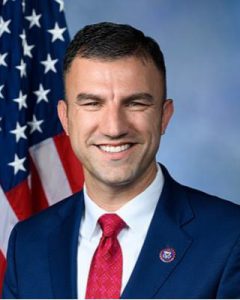 Current Position: US Representative of IN-01 since 2022
Current Position: US Representative of IN-01 since 2022
Affiliation: Republican
District: South Bend, Elkhart, and Warsaw.
Upcoming Election:
In 2011 and 2012, Rudy Yakym was the Finance Director for Jackie Walorski’s congressional campaign. From 2013 to 2019, he was a vice president at the Bradley Company, a commercial real estate business. In 2015, then-Governor Mike Pence nominated Yakym to serve as a member of the Indiana Judicial Nominating Commission. Since 2019, Yakym has been the director of growth initiatives at Kem Krest, a logistics and supply chain organization.
OnAir Post: Rudy Yakym IN-02
Jim Banks IN-03
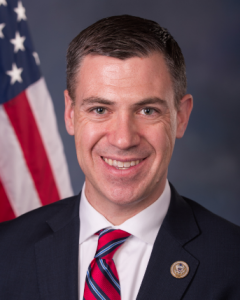 Current Position: US Representative of IN District 3 since 2017
Current Position: US Representative of IN District 3 since 2017
Affiliation: Republican
Former Position: State Senator from 2010 – 2016
District: Based in Fort Wayne, the district takes in the northeastern part of the state. This district includes all of Adams, Allen, Blackford, DeKalb, Huntington, LaGrange, Noble, Steuben, Wells and Whitley counties, as well as northern Jay and northeast Kosciusko counties.
Upcoming Election:
Featured Quote:
Today we heard Officer Harry Dunn say that they were unprepared. Leaving our officers on the frontline ill equipped was a dereliction of duty on @SpeakerPelosi’s watch. My @HouseGOP colleagues and I want to know why this happened, but the Speaker is afraid of the answers.
OnAir Post: Jim Banks IN-03
Jefferson Shreve IN-06
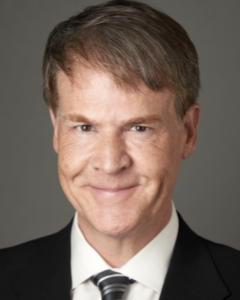 Jefferson Scott Shreve (born September 24, 1965) is an American politician from the state of Indiana. A member of the Republican Party, he previously served on the Indianapolis City-County Council from 2013 until 2016 for district 23 and again from 2018 until 2020 for district 16.
Jefferson Scott Shreve (born September 24, 1965) is an American politician from the state of Indiana. A member of the Republican Party, he previously served on the Indianapolis City-County Council from 2013 until 2016 for district 23 and again from 2018 until 2020 for district 16.
OnAir Post: Jefferson Shreve IN-06
Victoria Spartz IN-05
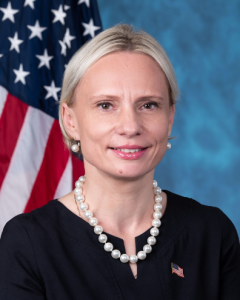 Current Position: US Representative of IN-05
Current Position: US Representative of IN-05
Affiliation: Republican
Former Position: State Senator from 2017 – 2020
District: Hamilton, Madison, Delaware, Grant, and Tipton counties, as well as the large majority of Howard County.
Upcoming Election:
Victoria Kulheyko was born in Nosivka, Chernihiv Oblast, Ukraine, which at the time was part of the Soviet Union. Before moving to the U.S., she earned a Bachelor of Science degree and a Master of Business Administration degree from Kyiv National Economic University. Spartz immigrated to the United States in 2000 at the age of 22 and became a U.S. citizen in 2006.
Spartz held a certified public accountant license from 2010 to 2021 and a real estate broker license from 2003 to 2020, both from the State of Indiana. She served as CFO in the Indiana Attorney General’s office
Featured Quote:
No immigration reforms should be on the table unless @POTUS deals with the southern border crisis & security. More than ONE MILLION people were already stopped at the border this year, which doesn’t account for people who made it across the border without being apprehended.
OnAir Post: Victoria Spartz IN-05
Mark Messmer IN-08
 Jefferson Scott Shreve (born September 24, 1965) is an American politician from the state of Indiana. A member of the Republican Party, he previously served on the Indianapolis City-County Council from 2013 until 2016 for district 23 and again from 2018 until 2020 for district 16.
Jefferson Scott Shreve (born September 24, 1965) is an American politician from the state of Indiana. A member of the Republican Party, he previously served on the Indianapolis City-County Council from 2013 until 2016 for district 23 and again from 2018 until 2020 for district 16.
OnAir Post: Jefferson Shreve IN-06
André Carson IN-07
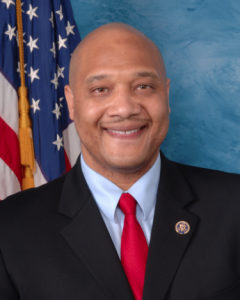 Current Position: US Representative of IN District 7 since 2008
Current Position: US Representative of IN District 7 since 2008
Affiliation: Democrat
Former Position: Indianapolis City-County Council from 2007 – 2008
District:
Upcoming Election:
Carson is the grandson of his predecessor, U.S. Representative Julia Carson (1938–2007), whose death in office triggered a special election. He was the second Muslim to be elected to Congress, after Keith Ellison of Minnesota.
From 1996 to 2005, Carson worked as a compliance officer for the Indiana State Excise Police, the law enforcement arm of the Indiana Alcohol and Tobacco Commission. He was later employed in the anti-terrorism division of Indiana’s Department of Homeland Security[
OnAir Post: André Carson IN-07
Larry Bucshon IN-08
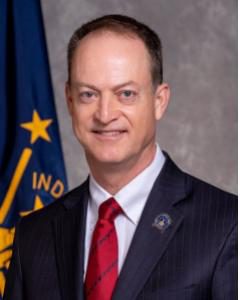 Mark Alan Messmer is a Republican who represented Senate District 48 of the Indiana State Senate from 2014 to 2024. Messmer is a former member of the Indiana House of Representatives, representing three terms for the 63rd district from November 5, 2008, to November 4, 2014.
Mark Alan Messmer is a Republican who represented Senate District 48 of the Indiana State Senate from 2014 to 2024. Messmer is a former member of the Indiana House of Representatives, representing three terms for the 63rd district from November 5, 2008, to November 4, 2014.
He previously served on the Holy Family School Board from 2001 to 2004. He served as its president from 2003 to 2004.
In 2022, Messmer sponsored a bill that bans the foreign ownership of agricultural land in Indiana. He also sponsored bills in 2022 to provide in-state tuition and drivers licenses to illegal immigrants.
OnAir Post: Mark Messmer IN-08
Erin Houchin IN-09
 Current Position: US Representative of IN 9th District since 2023
Current Position: US Representative of IN 9th District since 2023
Affiliation: Republican
Former Position: Indiana Senate from 2014 to 2022
District: Located in south-central and southeastern Indiana, the district stretches from the south suburbs of Indianapolis to the Indiana side of the Louisville metropolitan area. The district’s largest city is Bloomington, home to Indiana University
Upcoming Election:
Houchin worked as a field manager for U.S. Senator Dan Coats. She was first elected to the Indiana Senate in 2014, defeating incumbent Richard D. Young.
She ran for the United States House of Representatives for Indiana’s 9th congressional district in 2016, losing the Republican primary election to Trey Hollingsworth.
OnAir Post: Erin Houchin IN-09
More Information
Wikipedia
Contents
The government of Indiana is established and regulated by the Constitution of Indiana. The state-level government consists of three branches: the judicial branch, the legislative branch, and the executive branch. The three branches share power and jointly govern the state of Indiana. County and local governments are also constitutional bodies with limited authority to levy taxes, pass legislation, and create and maintain local public infrastructure.
The government of Indiana was first formed in December 1816 and replaced the government of the Indiana Territory. The early government came under criticism beginning as early as the 1820s for having many public offices filled by appointment and lack of delegation of authority to lower officials, requiring state level legislation for things like divorce approval. In 1851 a new constitution was adopted by the state, remedying many of these problems and opening many more office to public election. Significant government reforms were enacted again in 1971 when the state courts were reorganized and new powers were granted to the governor which had historically been a weak institution.
Elections to fill positions in Indiana’s government are held on Election Day, with special elections being occasionally held to fill unexpected vacancies. State representatives serve two-year terms, while all other elected state, county, and municipal officials serve four-year terms. Terms are staggered so that elections are held nearly every year, not just in even-numbered years. Most of the positions in the government bureaucracy are filled through the state merit system or the state patronage system.
The government provides a wide range of services including law enforcement, infrastructure construction and maintenance, licensing and registration, tax collection, fire protection, business and utility regulation, utility services, and park and conservation maintenance efforts.
Organization
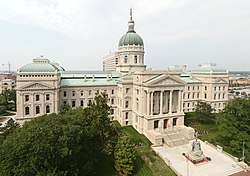
The government of Indiana sits in the state capital of Indianapolis. Each of the three branches operates out of the Indiana Statehouse. The state maintains several office buildings that hold many of its bureaus and departments. Most of the state’s bureaus are located in the Indiana Government Center, a building complex in downtown Indianapolis, located immediately west of the Statehouse.
Legislature
The Indiana General Assembly is the legislative branch of the state of Indiana. It is a bicameral legislature that consists of a lower house, the Indiana House of Representatives, and an upper house, the Indiana Senate. The General Assembly meets annually at the Indiana State House in Indianapolis.
Members of the General Assembly are elected from districts that are realigned every ten years. Representatives serve two-year terms; senators serve four-year terms.[1] Both houses must pass a bill before it can be submitted to the governor and enacted into law.[2]
Judiciary
The Indiana Supreme Court is the highest judicial body in Indiana. The court oversees the lower courts and commissions that jointly make up the judicial branch. The other courts include the Indiana Tax Court, the Indiana Court of Appeals, and circuit, superior, and city or town courts. Every county in the state has a circuit court, in which all matter of suits may be filed, and the larger cities (such as Indianapolis, Fort Wayne, South Bend, Evansville, and Terre Haute) have courts of concurrent jurisdiction that act as superior or municipal courts.[3] The courts are assisted by several commissions that are also part of the judicial branch, including the Judicial Nominating Commission.
Executive
The Governor of Indiana is the chief executive officer of the government of Indiana. Elected to a four-year term, the governor is responsible for overseeing the day-to-day management of the functions of the state government. The governor is assisted by other officials elected to the executive branch including the Lieutenant Governor and the Attorney General. The Governor is Mike Braun (R) since 2025, the Lieutenant Governor is Micah Beckwith (R) since 2025, the Attorney General is Todd Rokita (R) since 2021, the Secretary of State is Diego Morales (R) since 2023, the Treasurer is Daniel Elliott (R) since 2023, and the Auditor is Elise Nieshalla (R) since 2023.
Checks and balances
The Constitution of Indiana has several checks and balances built into its clauses to prevent any one branch of the government from becoming dominant. The governor has the power to veto any bill passed by the General Assembly.[2] The General Assembly has the power to override a veto with a simple majority. The courts have the authority to declare laws unconstitutional and repeal them, while the General Assembly has the power to initiate an amendment to the constitution to override the decision of the courts. Indiana judges are appointed by a commission made up of representatives of the governor and the courts. The courts’ jurisdictions can be regulated by the General Assembly.
Administrative divisions
County government

County council: A county council of seven or nine members controls all spending and revenue of the county government. Each county sets their own rules of whether or not a council position is At-Large or divided by districts. The council members serve four-year terms. They are responsible for setting salaries, the annual budget, and special spending. The council also has limited authority to impose local taxes, usually in the form of an income tax that is subject to state-level approval, excise taxes, or service taxes, like those on dining or lodging.[4][5]
Board of commissioners: The executive body consists of three commissioners. The commissioners are elected county-wide, and serve four-year terms, which are usually staggered. One of the commissioners, typically the most senior, serves as president. The commissioners are responsible for carrying out the acts legislated by the council, and for managing the day-to-day functions of the county government.[4][5]
Boards and commissions: Counties also utilize boards and commissions to oversee different aspects of the county. These boards are usually filled by direct election from the public, appointment by the Board of Commissioners, or a combination of both methods. Boards and commissions typically oversee management of water facilities, public roads, and new projects, among other tasks.[6] For example, each school district has a board, whose members are chosen through public election. County school boards are responsible for funding and management of the public school system within their district. The majority of school funding comes from property taxes. The tax rate is subject to state level approval and is capped by law.
Courts: Each county has its own circuit court, formed pursuant to the Indiana state constitution. Some counties have additional courts. The circuit and superior courts are courts of general jurisdiction. Several counties, including Marion County, also have dedicated small claims courts, in addition to city courts and town courts with statutorily defined jurisdiction.
County officials: The county has several other elected offices; including a sheriff, coroner, auditor, treasurer, recorder, surveyor, and circuit court clerk. Each of these elected officers serves a term of four years and oversees a different part of the county government. Members elected to county government positions are required to declare party affiliations and to be residents of the county.[5]
Town government
Many small communities in Indiana are incorporated as towns. A town includes a three, five, or seven-member town council serving primarily the legislative function of government. For practical reasons, the town council may share in some of the executive functions. However, under statute, the role of the executive officer belongs to the president of the town council. The president of the town council is an elected member of the town council, selected by his or her fellow town councillors to lead the council. The council may also appoint a non-partisan town manager to oversee the day-to-day operations of the municipal government. The council is responsible for setting the town’s budget and tax rates, and hiring all town employees. Unlike some states, Indiana town council members must declare a political party affiliation when they file to run for office. Indiana towns also elect clerk/treasurers, who manage town finances. As elected officials, clerk/treasurers operate independently of the town council, but within the council-approved budget.
City government
Most larger communities are incorporated as cities. A city can be either a third- or second-class city (the first-class designation is reserved for Indianapolis). Classification of cities is according to the Indiana Code, differentiated primarily by population. Large cities are first class, medium cities are second class, and small cities are third class. An Indiana city has a mayor-council form of government, but a third-class city may appoint a city manager. The mayor, elected to a four-year term, serves as the executive. Most mayors in Indiana are elected in partisan elections. The legislative branch consists of a five, seven, or nine-member city council. Council members serve four-year terms, and may be elected by geographic districts or at-large. Most cities in Indiana use districts.
Township government
A township trustee administers the civil government of the township. The trustee is elected by the residents of the township to a term of four years. The trustee is responsible for providing fire protection and ambulance service to unincorporated areas, providing for poor relief and burial of the indigent, maintaining cemeteries and burial grounds, resolving fencing disputes between neighbors, investigating claims of livestock killed by dogs, controlling weeds, managing the township budget and financial records, and preparing an annual financial report. The trustee also acts as the property tax assessor. Other public matters in which a trustee may sometimes be involved include zoning, parks, libraries, schools, shelters and community centers.[7]
The trustee is assisted by a three-member Township Board whose members are elected to four-year terms. Duties of the board include adopting the annual budget, serving as a board of finance and approving township contracts. In January of each year, the trustee presents to the board an annual report showing the receipts, expenditures, investments and debts of the township. The approved report is then published in local papers for public inspection.[8]
Politics
Indiana has long been considered to be a Republican stronghold and is rated R+11 on the Cook Partisan Voting Index. The current governor of Indiana is Republican Mike Braun, and Republicans hold supermajorities in both chambers of the Indiana General Assembly. It has only supported a Democrat for president four times since 1912- in the elections of 1932, 1936, 1964, and 2008. Historically, the state was a swing state, voting for the national winner all but four times from 1816 to 1912, with the exceptions of 1824, 1836, 1848, and 1876.[9]
Nonetheless, half of Indiana’s governors in the 20th century were Democrats. Indiana has also elected several Democrats to the Senate in recent years. Certain cities, too, tend to favor Democrats; Gary, Indiana has had a Democratic mayor for the last 77 years. As while only five Democratic presidential nominees have carried Indiana since 1900, 11 Democrats were elected governor during that time. Before Mitch Daniels became governor in 2005, Democrats had held the office for 16 consecutive years. Since then, however, the office has been held consistently by Republicans. Democrats also generally held control of the Indiana House of Representatives during the 1990s and 2000s as well.
Historically, Republicans have been strongest in the eastern and southern portions of the state, as well as the suburbs of the state’s major cities. Democrats have been strongest in the northwestern and central parts of the state along with the major cities. However, outside of Indianapolis, the Chicago suburbs, and Bloomington; the state’s Democrats tend to be somewhat more conservative than their counterparts in the rest of the country, especially on social issues.[citation needed]
Indiana’s delegation to the United States House of Representatives is not completely Republican either. Instead, it has generally served as a bellwether for the political movement of the nation. For instance, Democrats held the majority of seats until the 1994 Republican Revolution, when Republicans took a majority. This continued until 2006, when three Republican congressmen were defeated in Indiana; (Chris Chocola, John Hostettler and Mike Sodrel), giving the Democrats a majority of the delegation again.[10]
See also
- Politics of Indiana
- Governor of Indiana
- Indiana General Assembly
- Indiana Supreme Court
- Constitution of Indiana
- Political party strength in Indiana
References
- ^ – via Wikisource.
- ^ a b “How a Bill Becomes a Law” (PDF). Indiana Chamber of Commerce. 2008. Retrieved 20 March 2016.
- ^ Bamberger; Feibleman (August 1948). “Aspects of Practice in Various States (Part Three)”. Commercial Law Journal.
- ^ a b Indiana Code Title 36, Article 2, Section 3 Archived 2008-10-05 at the Wayback Machine
- ^ a b c Indiana Code Title 2, Article 10, Section 2-13 Archived 2008-10-29 at the Wayback Machine
- ^ “Boards and Commissions”. www.allencounty.us. Retrieved 2017-06-19.
- ^ “Duties”. unitedtownships.org. Retrieved 2016-03-20.
- ^ “Government”. unitedtownships.org. Retrieved 2016-03-20.
- ^ “Indiana Presidential Election Voting History – 270toWin”.
- ^ “Democrats Take House by a Wide Margin”. NPR.org. NPR. Retrieved 2006-12-11.
External links
- “Indiana’s official website”. IN.gov. Retrieved 2008-08-11.
